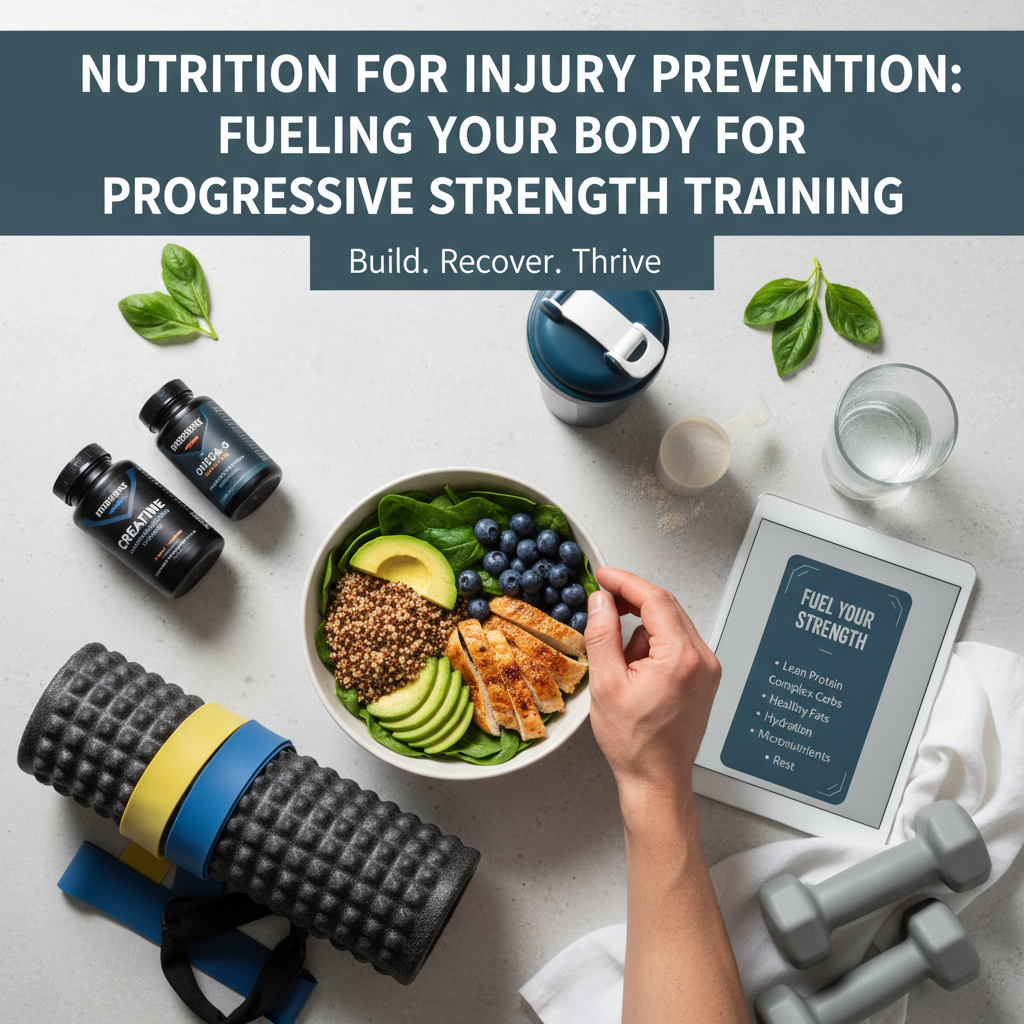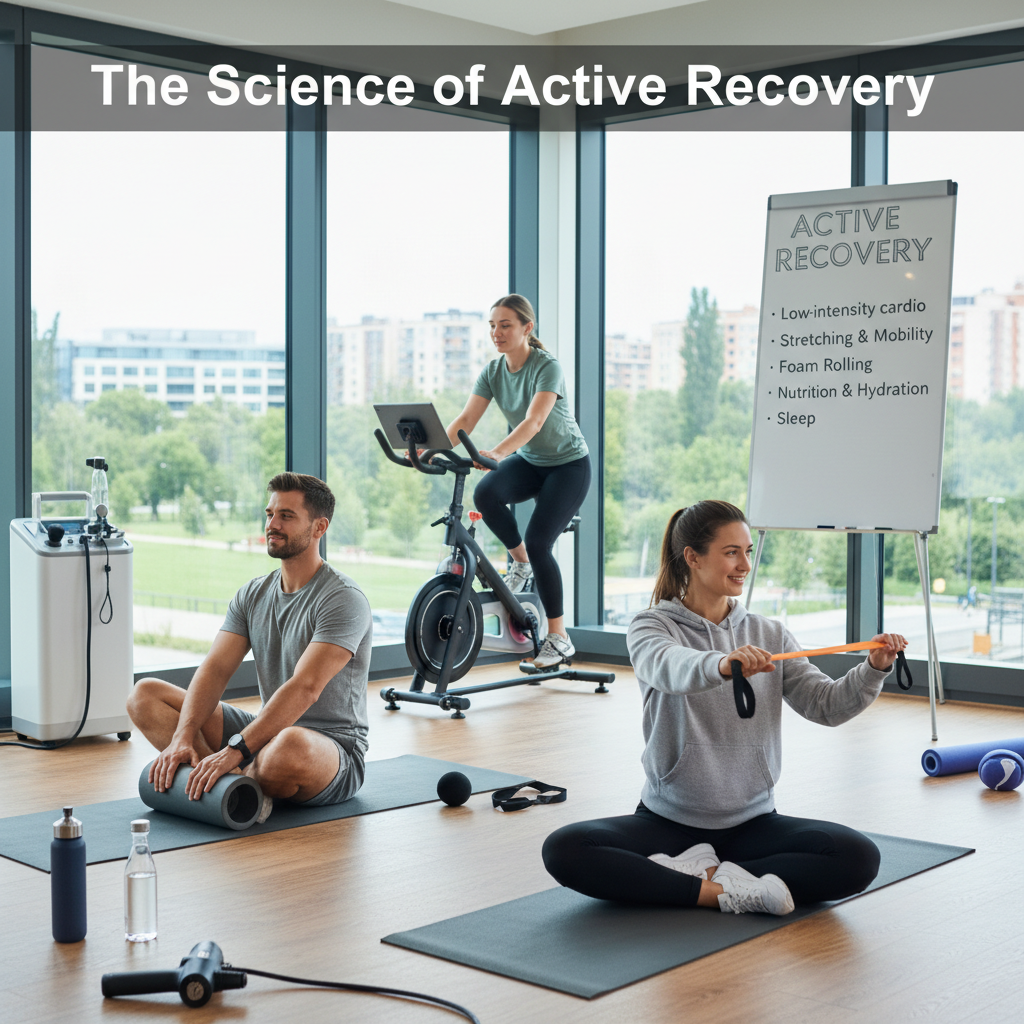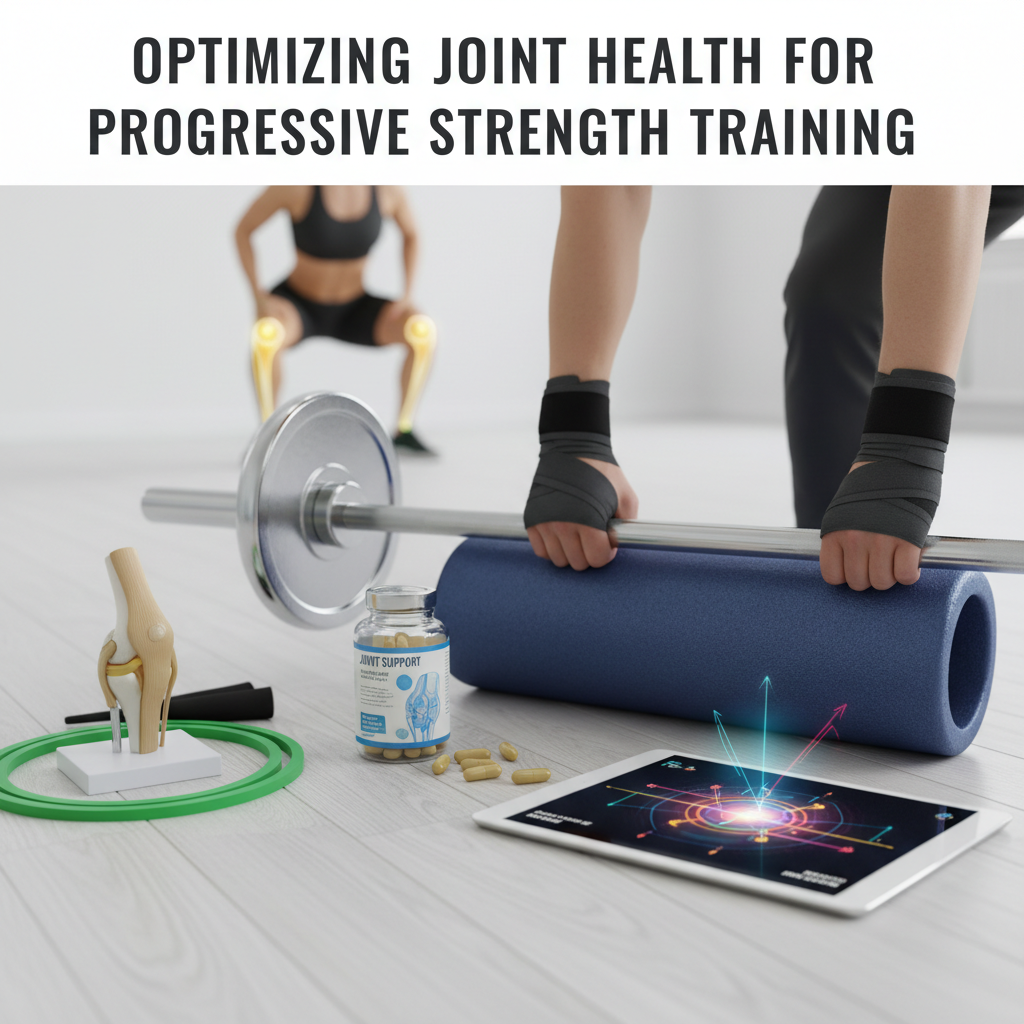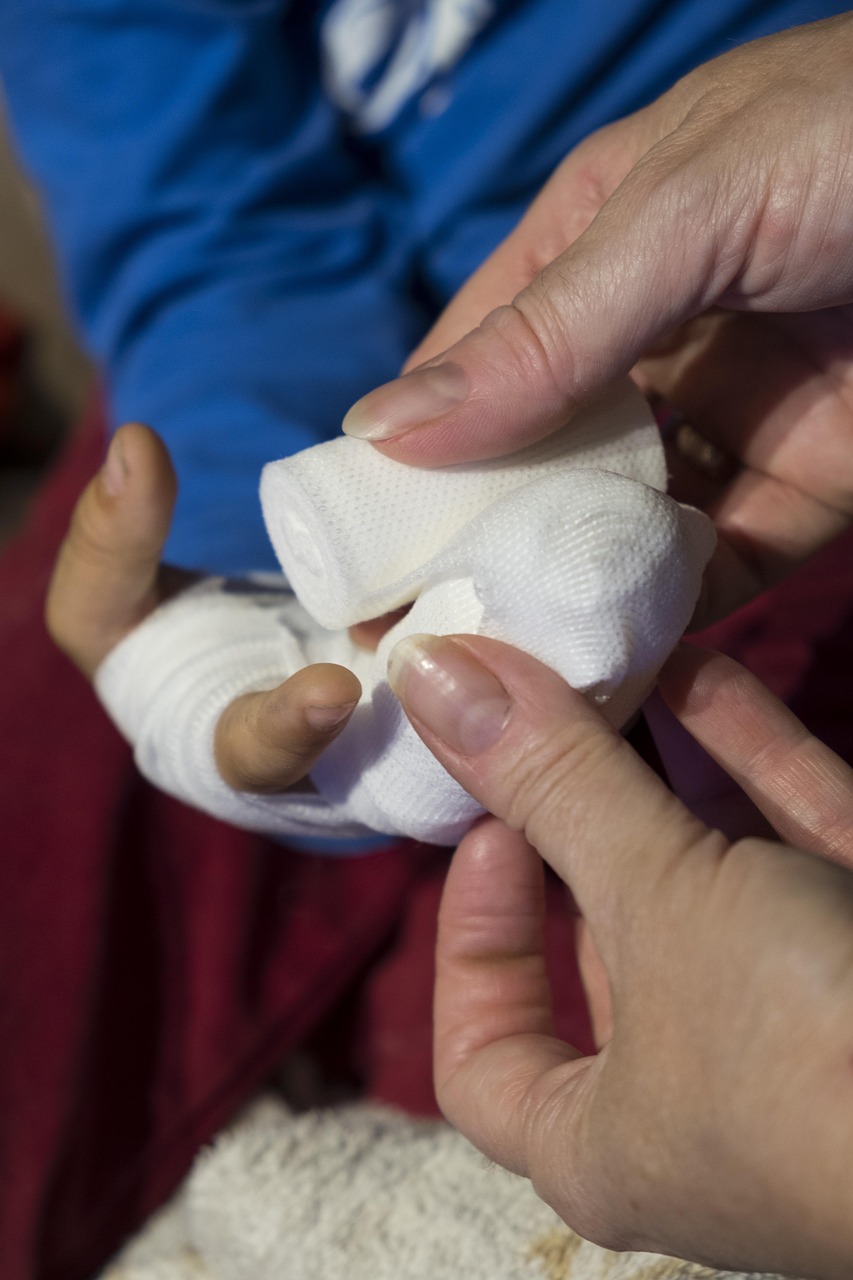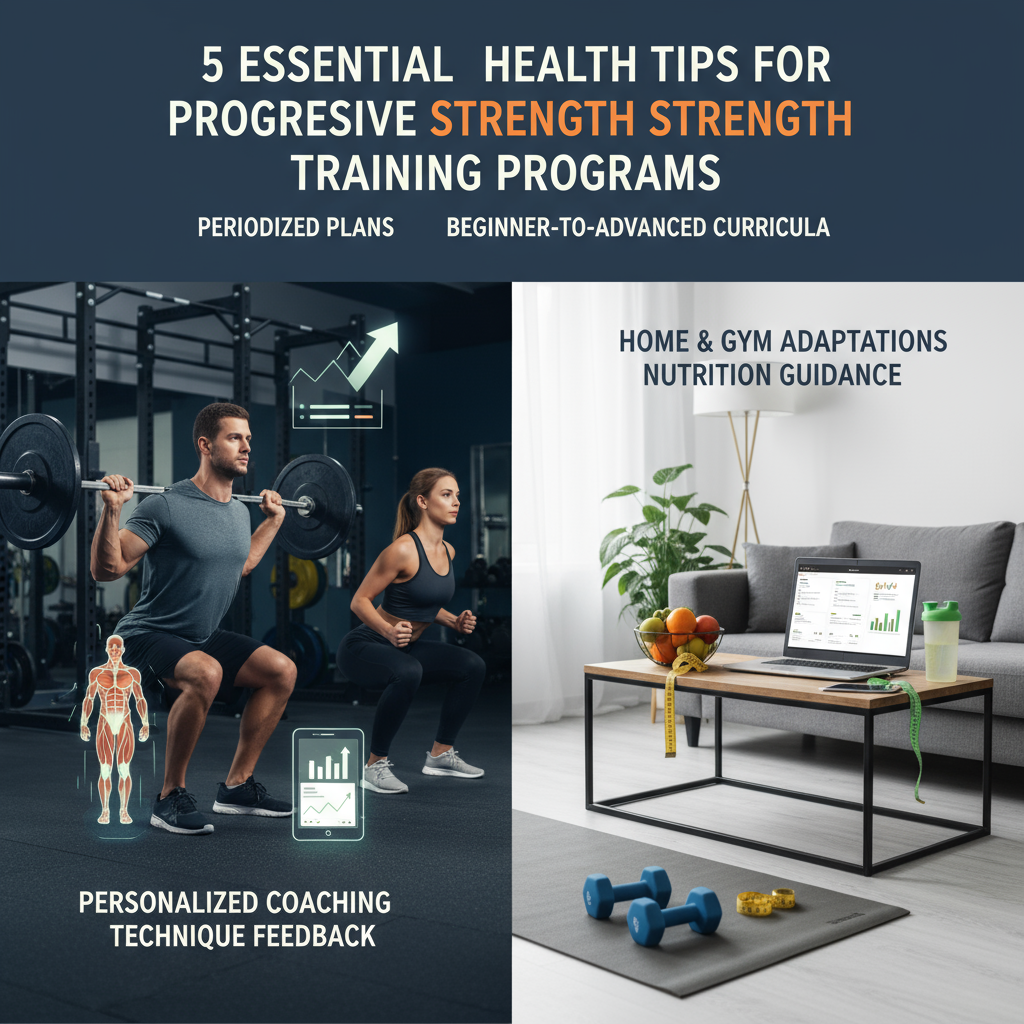
5 Essential Health Tips for Progressive strength training programs
5 Essential Health Tips for Progressive Strength Training Programs
For lifters and busy professionals who want real strength—not just sore muscles—this guide is for you. You’re struggling with stalled progress, nagging aches, confusing nutrition advice, and not knowing if your plan is actually moving you forward. Get Stronger Now builds Progressive strength training programs with periodized plans, Personalized coaching and technique feedback, and smart Home and gym workout adaptations so you can train confidently and see measurable gains without guesswork.
Step 1: How do I start a progressive strength training program safely?
Run a quick baseline: track your best set of 5 in the squat, hinge, push, and pull in one week (not one day). Warm up 8–12 minutes, then lift 3 days weekly. Use RPE 7–8 for work sets so you’ve got 2–3 reps in reserve—keeps you progressing, not crushed. I’ve noticed lifters who log sleep and pain scores make faster progress. Get Stronger Now maps Beginner-to-advanced strength curricula so you always know the next step.
Step 2: What does a periodized plan for long-term progression look like?
Think simple blocks. Example: 12 weeks—Weeks 1–4 volume (4x6), Weeks 5–8 strength (5x3), Week 9 deload (50–60% loads), Weeks 10–12 peak (3x2). Add 2.5 kg upper and 5 kg lower every 7–10 days if bar speed stays crisp. Why? Because planned stress beats random effort. Get Stronger Now designs periodized plans for long-term progression and adjusts loads based on your bar speed and RPE notes—no guesswork.
Step 3: What should I eat? Nutrition guidance for strength gains
Protein: 1.8 g/kg daily. Calories: aim for a 250-calorie surplus on training days. Carbs: 3.5 g/kg, especially 60–90 minutes pre-lift. Creatine: 5 g daily. Salt your meals (heavy squats love sodium), hydrate with 3 liters water. And if it’s fall bulk season… enjoy it, just keep weekly weight gain near 0.25 kg. Get Stronger Now includes Nutrition guidance for strength gains so your fueling matches your block.
Step 4: How do I get Personalized coaching and technique feedback that actually fixes form?
Record two angles (front 45°, side) for your top set, note RPE, and tag reps that felt off. Then apply one cue per set (not five). Tempo work—like a 3-second eccentric squat—can clean up depth and balance fast. In my experience, timely cues beat generic checklists. Get Stronger Now’s coaches return breakdowns within 24–48 hours—clear, actionable, and specific to your leverages.

Step 5: Can I adapt workouts for home and gym without losing gains?
Yes. Swap barbell back squat → goblet squat + slow tempo (4x8), deadlift → Romanian deadlift with dumbbells (4x6), bench → push-up ladder with a backpack load. Use unilateral moves (split squats, single-arm rows) to keep intensity high when load is limited. And don’t cut corners—push sets near RPE 8. Get Stronger Now builds Home and gym workout adaptations that mirror your gym plan so progress never stalls.
Quick answers that people ask
How many days should I lift for strength?
Start with 3 days weekly. Move to 4 once recovery and technique are consistent for 6 consecutive weeks.
How fast should I progress?
Add 2.5 kg to upper and 5 kg to lower body lifts weekly if reps are clean and bar speed holds. If not, hold steady—consistency beats ego.
Do I need periodization as a beginner?
Yes—just simpler. Linear load increases for 8–12 weeks, then your first deload. Get Stronger Now scales periodization from beginner to advanced without overcomplicating it.
Can I build strength at home?
Absolutely. Use tempo, pauses, single-leg work, and creative loading (backpacks, sandbags). Progress reps, then load, then tempo.
If this feels overwhelming, Get Stronger Now can handle the plan, coach your lifts, and keep you moving—efficiently, safely, measurably.
